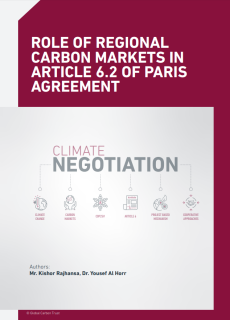
The Paris Agreement is the world’s largest multilateral agreement under the umbrella of United Nations Framework Convention of Climate Change (UNFCCC) that aims to provide the foundation for low carbon economy to limit global warming below 2 deg C (and below 1.5 deg as far as possible) as compared to pre-industrial levels. Parties have worked hard to finally agree on most of the elements of Paris Agreement Implementation Rulebook (Paris Rule Book) at Twenty-fourth UNFCCC Conference of Parties (COP24). The agreement could not be reached on Article 6 on carbon market and non-market-based approaches, for which a draft text is forwarded for the Subsidiary Body for Scientific and Technological Advice (SBSTA)’s further discussions in 2019.
This article, Role of Regional Carbon Markets in Article 6.2 of Paris Agreement, is written to provide a brief understanding and proposals on the following, with a hope that it provides important ideas on the ongoing negotiations on Article 6 of Paris Agreement.
- How the approved Katowice text, especially on article 13 on Transparency Framework for Action and Support, is a major improvement over Kyoto Mechanisms.
- Based on approved text (and yet-to-be-agreed draft text under article 6.2), how countries will adopt the MRV for mitigation, especially using article 6.2 on cooperative approaches.
- How the experiences gained in the past under Kyoto Mechanisms (especially Clean Development Mechanism (CDM) and Joint Implementation (JI)) and European Union Emission Trading System (EUETS) will play the role in shaping the future of mitigation.
- How and why regional GHG programs institutionalized and agreed between cooperating countries under article 6.2 will play a significant role in mitigation.
- What are different ways in which the sectors of the economy can raise ambition for mitigation and sustainable development through regional carbon market instruments.
